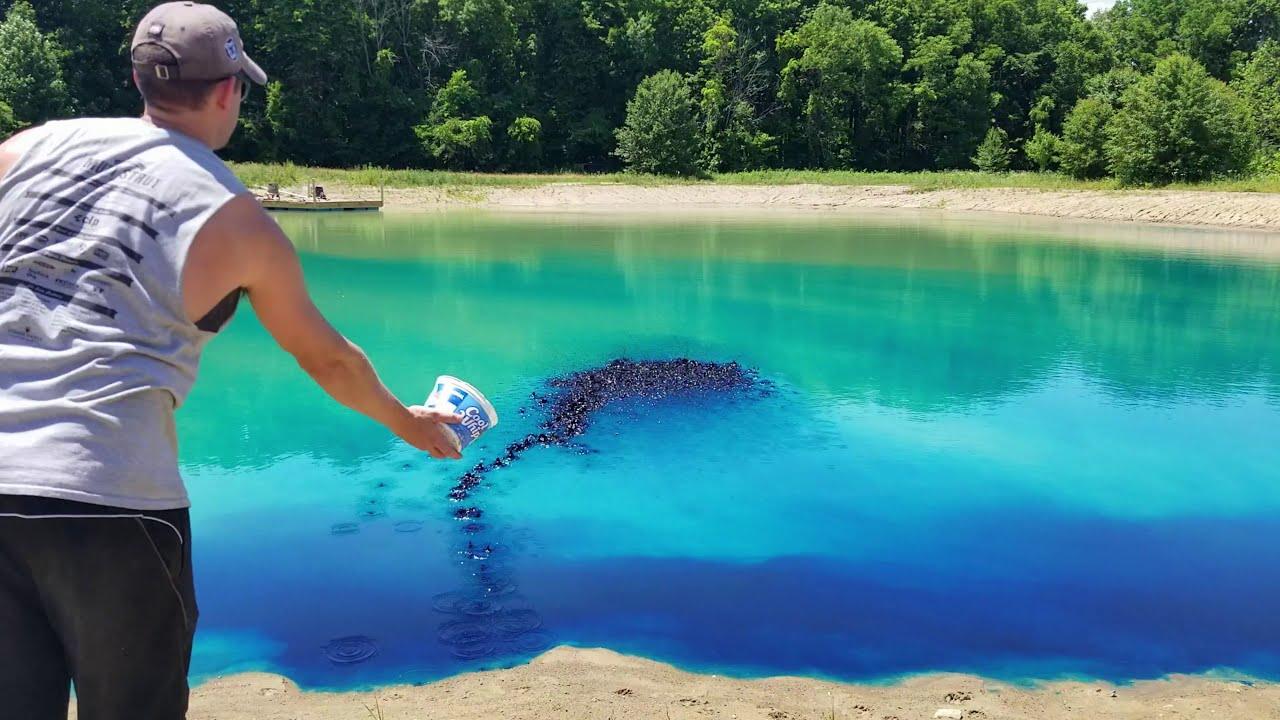
The Essential Guide to Pond Dye: Beautify and Protect Your Water Feature
Ponds add a touch of tranquility and beauty to any landscape, but maintaining their health and appearance requires careful consideration. One tool that has gained popularity among pond owners is pond dye. Pond dye not only enhances the aesthetic appeal of your water feature but also offers several benefits to promote a healthy ecosystem. In this comprehensive guide, we will explore the various advantages of pond dye, the different colors available, the application process, and address any safety concerns.
I. Benefits of Pond Dye
-
Aesthetics: Pond dye instantly transforms your pond into a stunning visual centerpiece. It adds depth and richness to the water, making it more visually appealing.
-
Algae Control: Pond dye creates a natural shade on the water's surface, limiting sunlight penetration. This prevents excessive algae growth, keeping your pond clear and clean.
-
Fish Protection: Pond dye helps protect fish by shielding them from harmful UV rays. Sunlight can cause stress and damage to fish, especially those with sensitive skin or scales. The dye acts as a sunscreen, reducing the risk of sunburn and other related issues.
-
Temperature Stabilization: The dark color of pond dye absorbs sunlight, leading to a slight increase in water temperature. This can be beneficial during colder months by minimizing temperature fluctuations and providing a more stable environment for aquatic life.
II. Different Colors of Pond Dye
-
Blue Pond Dye: Blue is the most popular color choice for pond dye. It creates a natural-looking, deep blue or turquoise hue, reminiscent of natural bodies of water. Blue dye adds a serene and tranquil ambiance to your pond.
-
Black Pond Dye: Black pond dye creates a dramatic effect, giving your pond a reflective and mysterious appearance. It is an excellent choice for showcasing vibrant aquatic plants or creating a mirror-like surface for nearby landscape features.
-
Green Pond Dye: Green pond dye replicates the color of healthy, lush vegetation. It gives your pond a more natural and vibrant look, especially if you have an abundance of plants. Green dye works well in conjunction with blue dye to create a beautiful combination.
-
Other Colors: Some pond dyes are available in additional shades like brown, red, or even purple. These colors can add uniqueness and individuality to your pond, allowing you to personalize your water feature to suit your taste.
III. Application Process
-
Determine the Quantity: Calculate the volume of your pond by measuring the length, width, and average depth. This will help you determine the appropriate amount of pond dye to use.
-
Choose the Right Dye: Select a high-quality pond dye specifically formulated for use in water features. Read the instructions and make sure it is safe for fish, plants, and wildlife.
-
Precautions: Wear gloves and protective clothing when handling pond dye to avoid staining skin and clothes. Take care not to spill the dye on surfaces that may be affected by staining.
-
Mixing and Dispensing: Most pond dyes come in liquid or water-soluble powder form. Follow the instructions to mix the dye with water in a clean container. Once mixed, evenly distribute the dye across the pond's surface using a sprayer, by pouring it from the shore, or by walking around the pond's edge and pouring it directly.
-
Repeat as Needed: Depending on the dye's concentration and the desired effect, you may need to reapply the dye every 4 to 8 weeks. Follow the manufacturer's recommendations for reapplication.
IV. Safety Considerations
-
Non-Toxic Formulas: High-quality pond dyes are generally safe for fish, plants, and wildlife when used as directed. Look for non-toxic formulas specifically labeled as safe for aquatic life.
-
Environmental Impact: Pond dyes are environmentally friendly and biodegradable. They do not harm the natural balance of your pond or the surrounding ecosystem. However, avoid using excessive amounts of dye, as this may lead to a negative impact on plant life or other organisms.
-
Drinking Water Concerns: If you have a pond used as a drinking water source for livestock or other animals, consult with a local water management professional or veterinarian before using pond dye.
-
Regulations and Restrictions: Before applying pond dye, check your local regulations regarding the use of dyes in bodies of water. Some areas may have restrictions or guidelines to follow.
Conclusion
Pond dye offers numerous benefits for pond owners, including enhanced aesthetics, algae control, fish protection, and temperature stabilization. With various colors available, you can select the shade that best suits your vision for your water feature. By following the proper application process and using high-quality, non-toxic dyes, you can enjoy the beauty and benefits of pond dye without compromising the safety of your pond's inhabitants. Remember to consider the specific needs of your pond and consult professionals if you have any concerns. Enjoy the stunning transformation of your pond with the addition of pond dye.

